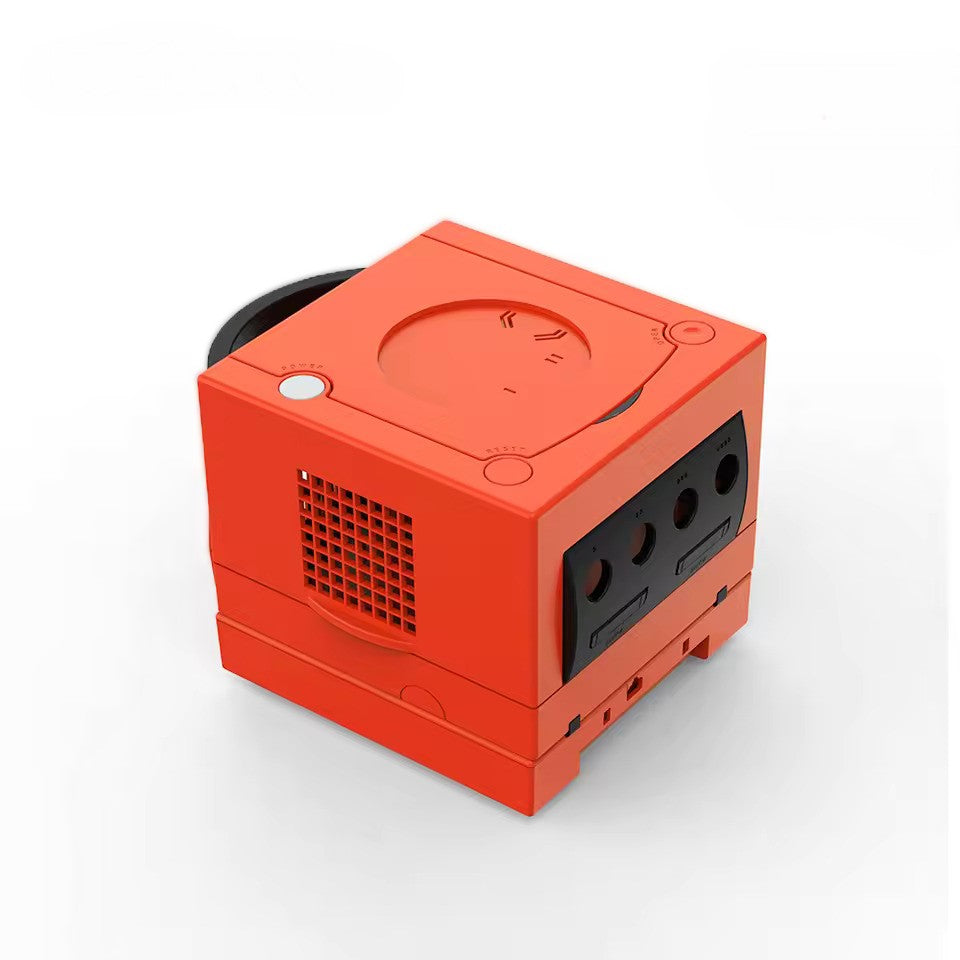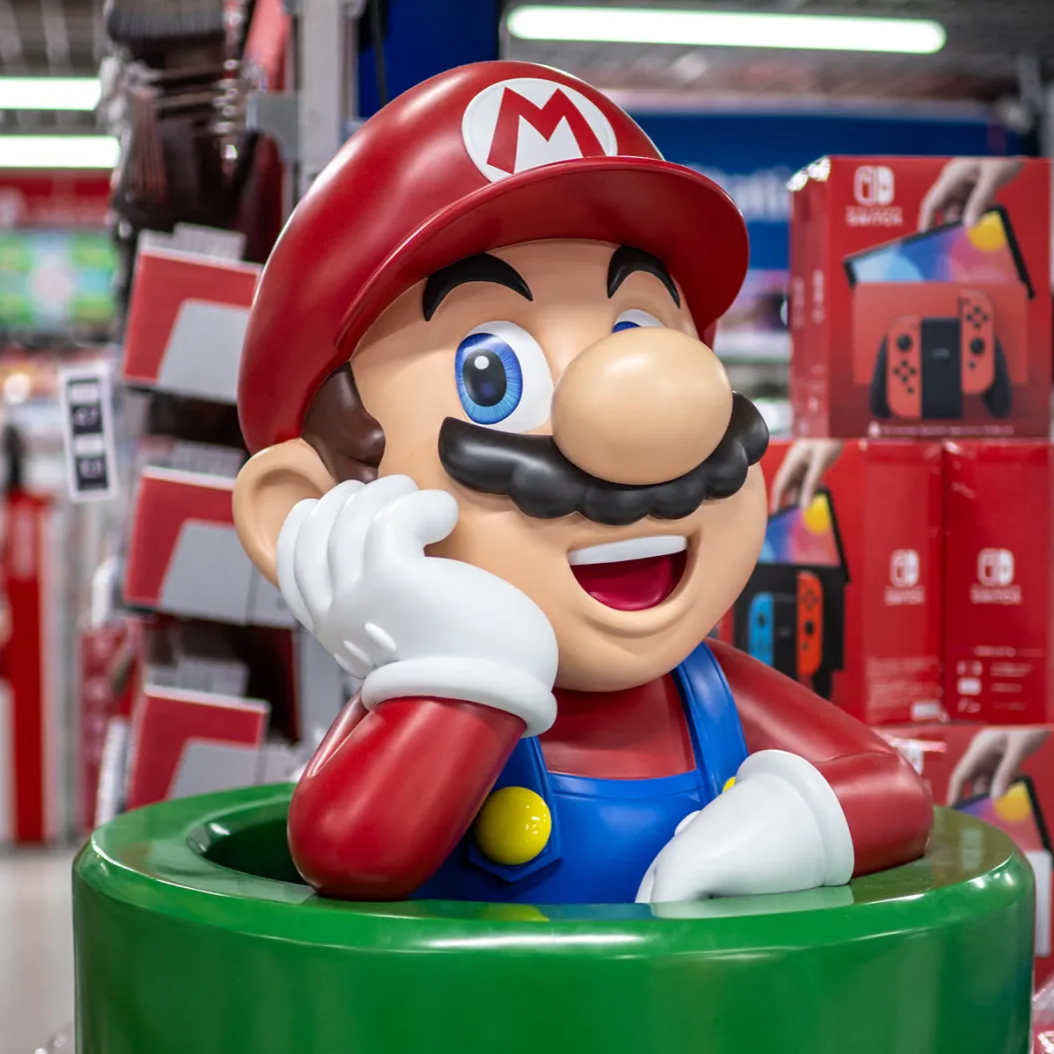When Nintendo released its distinct purple cube-shaped console in 2001, few could have predicted its lasting impact on gaming history. The GameCube, despite being commercially overshadowed by Sony's PlayStation 2, delivered some of the most innovative, polished, and beloved games of its generation. Running from 2001 to 2007, this compact powerhouse pushed the boundaries of game design and established franchises that continue to thrive today.
Our criteria for this list considers gameplay innovation, cultural impact, and lasting influence. These aren't just games that were popular during their time—they're titles that changed how we think about gaming, introduced mechanics that are still used today and created experiences that remain engaging decades later. So, in no particular order, here is our list!
Our Top 15 GameCube Games
Eternal Darkness: Sanity's Effect
Silicon Knights' psychological horror masterpiece stands out for its groundbreaking "sanity meter"—a mechanic that caused the game itself to seemingly malfunction as your character's mental state deteriorated. From fake error messages to simulated TV volume changes, Eternal Darkness broke the fourth wall in ways rarely seen before or since.
The game's historical narrative spanning multiple characters across 2000 years was ambitious and engrossing. Despite modest commercial success, it represents the kind of bold design that made the GameCube era special—a wholly original experience that could only exist through video games.
F-Zero GX
This collaboration between Nintendo and Sega delivered blistering 60fps futuristic racing that pushed the GameCube hardware to its limits. F-Zero GX's uncompromising difficulty and technical precision demanded mastery of its controls, track layouts, and racing mechanics.
Its thirty challenging courses, set in fantastical environments ranging from casino-themed tracks to circuits suspended above alien cities, remain benchmark examples of track design. Even today, speed-running communities celebrate F-Zero GX as one of the most technically demanding racing experiences ever created.
Paper Mario: The Thousand-Year Door
Intelligent Systems perfected the Paper Mario formula with this installment, creatively expanding the paper aesthetic with mechanics that let Mario fold into a paper airplane, roll into a tube, or slip through cracks. The battle system's timed button presses kept players engaged, while the audience mechanic added unpredictability to encounters.
What truly elevates The Thousand-Year Door is its writing and world-building. From the seedy Rogueport to the mysterious civilization beneath it, the game created a world that felt simultaneously whimsical and substantial, populated by one of the most memorable character casts in any Nintendo game.
Pikmin
Inspired by Miyamoto's garden observations, this accessible real-time strategy game introduced Captain Olimar, who must employ indigenous plant-like creatures to recover his spaceship parts. Pikmin's genius lies in simplifying RTS mechanics while maintaining surprising depth through the management of different Pikmin types.
The game's environmental themes were ahead of its time, subtly addressing resource depletion and ecosystem management through the lens of discovery rather than heavy-handed messaging, making Pikmin's world feel alive and its themes resonate on multiple levels.
Resident Evil 4
Originally a GameCube exclusive, this survival horror masterpiece introduced the over-the-shoulder third-person perspective that would become standard in countless action games that followed. Director Shinji Mikami's bold move away from fixed camera angles created a perfect balance of tension, action, and horror.
The game's influence cannot be overstated—from its precision aiming system to its context-sensitive actions, inventory management, and merchant system ("What are ya buyin'?"), Resident Evil 4 established conventions that shaped third-person action games for over a decade.
Animal Crossing
What began as a quirky life simulation has evolved into one of Nintendo's most valuable franchises. The original Animal Crossing introduced Western players to a game with no clear objectives beyond living a pleasant virtual life in a village populated by anthropomorphic animals.
The game's use of the GameCube's internal clock to sync with real-world time created a persistent world that continued whether you were playing or not. This "real-time gaming" approach was revolutionary, predating the social and mobile games that would later adopt similar mechanics.
Mario Kart: Double Dash!!
The two-character system, where one player controlled both driving and item usage across two characters, added strategic depth that set Double Dash!! apart. Character-specific special items introduced another layer of strategy, forcing players to consider team composition alongside driving skill.
Tracks like Baby Park (a simple oval that created chaos with its short lap design) and Dino Dino Jungle (with its precarious bridges and roaming dinosaurs) showcased Nintendo's creativity in crafting memorable racing environments that many consider the series' high point for multiplayer enjoyment.
Metroid Prime
Retro Studios accomplished the seemingly impossible by converting Metroid from a 2D side-scroller to a first-person adventure that felt both fresh and faithful to the series' roots. Prime recognized that Metroid was primarily about exploration and discovery, with the first-person perspective amplifying these elements.
The scan visor mechanic transformed environmental storytelling, allowing players to learn about Tallon IV at their own pace. The thoughtful level design, which required revisiting areas with new abilities, demonstrated that the essence of Metroid could thrive in 3D while showcasing the GameCube's technical capabilities.
The Legend of Zelda: Wind Waker
Initially controversial for its cel-shaded art style, Wind Waker has been vindicated by time, now celebrated for its timeless visual aesthetic. The vast ocean setting replaced traditional field exploration with seafaring adventure, emphasizing the spirit of discovery that defines the series.
Wind Waker's expressive character animations added emotional depth that wasn't possible with more realistic styles of the era. Link's changing facial expressions and cartoon-like movements created a protagonist with more personality without speaking a word, culminating in one of the most emotionally resonant conclusions in the series.
Super Mario Sunshine
Following Super Mario 64 was no small task, but Sunshine distinguished itself with FLUDD—the water-spraying device that created new movement and puzzle-solving options. Isle Delfino offered a cohesive tropical setting connecting diverse environments through a central hub world.
Sunshine's willingness to experiment with the Mario formula through voice acting, a more defined storyline, and new collectible systems represented Nintendo trying new approaches. While not every experiment succeeded, Sunshine's ambition and satisfying platforming mechanics earned it a high place in the GameCube library.
Tales of Symphonia
Namco's Tales series reached new heights with Symphonia, an epic JRPG addressing themes of discrimination, sacrifice, and environmental exploitation. Its real-time battle system struck a perfect balance between accessibility and depth, allowing for complex combos and strategic party management.
Symphonia's cel-shaded art style gave the game a distinct visual identity while enabling expressive character animations during both gameplay and the anime-style skits that developed relationships. Lloyd Irving's journey to regenerate his dying world could easily consume over 80 hours, delivering exceptional value.
Viewtiful Joe
Capcom's side-scrolling action game combined traditional beat-'em-up gameplay with unique "VFX Powers" that manipulated time and visual effects. Joe's abilities—Slow, Mach Speed, and Zoom In—were inspired by cinematic techniques, reflecting the game's movie-obsessed theme.
What made Viewtiful Joe exceptional was how these powers layered on top of each other, creating complex combinations that rewarded creative thinking. The distinctive cel-shaded visual style complemented the superhero narrative while its punishing difficulty and scoring system hearkened back to arcade traditions.
Super Smash Bros. Melee
Few sequels have improved upon their predecessors as dramatically as Melee. With 26 fighters representing Nintendo's history, it offered unprecedented crossover appeal while providing enough depth for competitive mastery. The discovery of technical mechanics like wavedashing and L-canceling created a skill ceiling that players are still reaching for today.
Melee's lasting impact is best demonstrated by its competitive scene. More than two decades after release, major tournaments still feature the game, with technical proficiency and strategies continuing to evolve. While Nintendo has released three Smash Bros. games since, many maintain that Melee represents the perfect balance of accessibility and competitive depth.
Star Wars Rogue Squadron II: Rogue Leader
This launch title defied trends by delivering an experience that showcased the GameCube's capabilities while remaining enjoyable throughout the console's lifespan. Developer Factor 5 created the most authentic Star Wars flight experience of its time, meticulously recreating iconic sequences from the original trilogy.
Rogue Leader's controls struck a perfect balance between simulation complexity and arcade accessibility. The mission variety, which included escort missions, bombing runs, and dogfights, ensured the experience remained fresh throughout the campaign while fulfilling the fantasies of Star Wars fans everywhere.
The Legend of Zelda: Twilight Princess
Arriving at the end of the GameCube's lifecycle, Twilight Princess represented the culmination of everything Nintendo had learned about creating 3D Zelda adventures. The dual-world mechanic, with Link transforming between human and wolf forms, created gameplay variety and unique puzzle possibilities.
Twilight Princess featured some of the most impressive dungeon designs in the series' history, from the multi-leveled Snowpeak Ruins to the gravity-defying City in the Sky. The narrative, exploring themes of light and shadow through Midna and her fallen Twilight Realm, achieved emotional resonance rarely seen in Nintendo titles, making it the definitive GameCube experience.
The Legacy Lives On
The impact of these GameCube titles extends far beyond their original releases. Many have received remasters or influenced later games in their respective series. Options exist to experience these classics today through Nintendo Switch Online, various legal emulation options, and occasional enhanced ports.
These games represent a period of extraordinary creativity when developers pushed boundaries and took risks that might not be commercially viable in today's market. The lessons they taught about game design—from Wind Waker's art direction to Metroid Prime's environmental storytelling—continue to influence modern game development.
Preserving the GameCube Experience with Hand Held Legend
For those looking to revisit these classic GameCube titles on original hardware, Hand Held Legend offers a wide selection of mods and replacement parts. Our specialized GameCube mod kits allow enthusiasts to breathe new life into aging consoles with modern upgrades like HDMI output adapters, replacement analog sticks, custom button sets, and more!
Hand Held Legend's premium-quality replacement parts ensure that your cherished GameCube can continue delivering these incredible gaming experiences for years to come. Our dedication to preserving gaming history makes it possible for both collectors and casual players to enjoy these timeless classics exactly as they were meant to be experienced – on the iconic purple cube that started it all.







